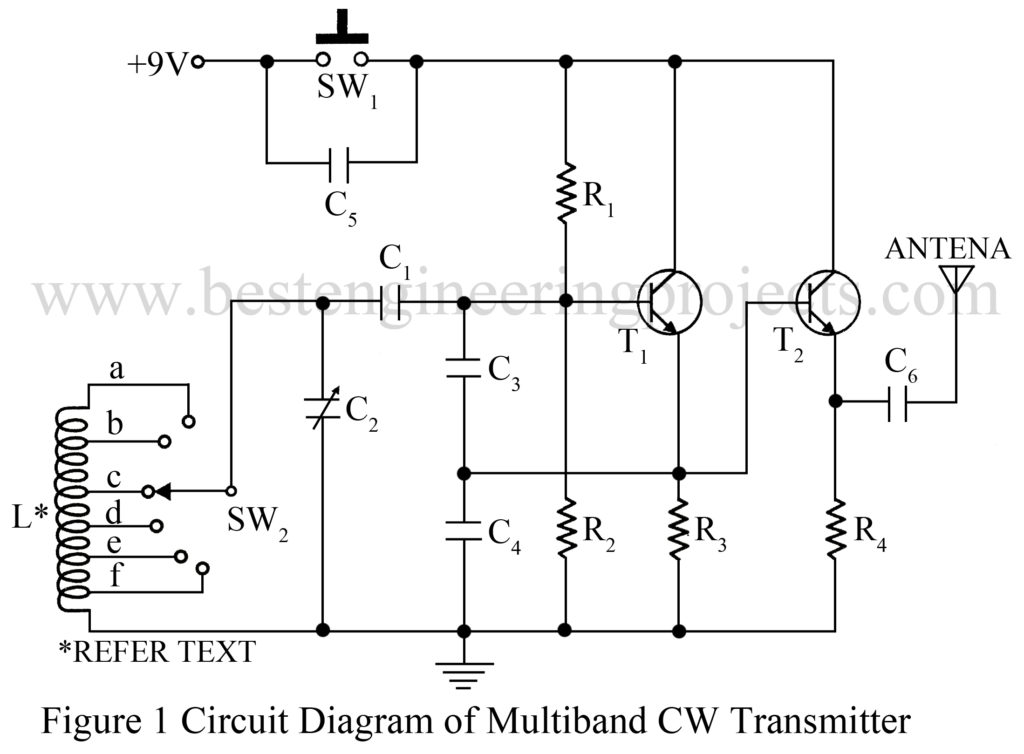A frequency oscillator is used to generate frequency oscillation, and a radio frequency oscillator is used to generate high-frequency which is known as a carrier wave. The circuit multiband CW transmitter is a continuous wave (CW) transmitter for transmitting morse code signal in a shortwave band. The circuit posted here is a variable frequency oscillator (VFO) whose frequency can be varied from 5.2 MHz to 15 MHz. The transmitted signal from this circuit can be received in a short wave band by any radio receiver.
Circuit Description of Multiband CW Transmitter

The circuit of the multi-band CW transmitter comprises two transistors (2N2222 and BC547), gang capacitor, coil L, antenna, etc. Transistor T1 is used for proper positive feedback for oscillation whereas transistor T2 function as an emitter follower. Switch SW1 is connected across capacitor C5 as shown in the figure. The tank circuit is formed using a coil and gang capacitor. A gang capacitor is used to varying frequencies. Capacitor C1 is worked as a coupling capacitor and is used to couple the signal from the tank circuit to the base of transistor T1. As we know that frequency is increased by reducing the number of turns of the coil. The frequency is selected by using rotary switch SW2. An antenna is attached to the output from the emitter of transistor T2 through capacitor C6 for better transmission.
|
Taping |
|
a) For 5.2 – 5.8 MHz (60 turns from the ground end) b) For 6.7 – 7.2 MHz (40 turns from the ground end) c) For 7.9 – 8.8 MHz (30 turns from the ground end) d) For 9.0 – 10.0 MHz (25 turns from the ground end) e) For 11.5 – 12.7 MHz (20 turns from the ground end) f) For 13.3 – 15.0 MHz (15 turns from the ground end) |
BEP NOTE: For better shielding enclose the circuit in a metal box.
PARTS LIST OF MULTIBAND CW TRANSMITTER
|
Resistor (all ¼-watt, ± 5% Carbon) |
|
R1, R2 = 10 KΩ R3 = 1 KΩ R4 = 2.7 KΩ |
|
Capacitors |
|
C1 = 56 pF (Ceramic Disc) C2 = Gang Capacitor C3 = 47 pF (Ceramic Disc) C4 = 100 pF (Ceramic Disc) C5, C6 = 0.1 µF (Ceramic Disc) |
|
Semiconductors |
|
T1 = 2N2222 (General Purpose NPN Silicon Transistor) T2 = BC547 (General Purpose NPN Silicon Transistor) |
|
Miscellaneous |
|
L = 60 turns of 22 SWG copper wire closely wounded on ½ ” PVC tube SW1 = Push-to-on Switch SW2 = 6-pole Rotary Switch Antenna |